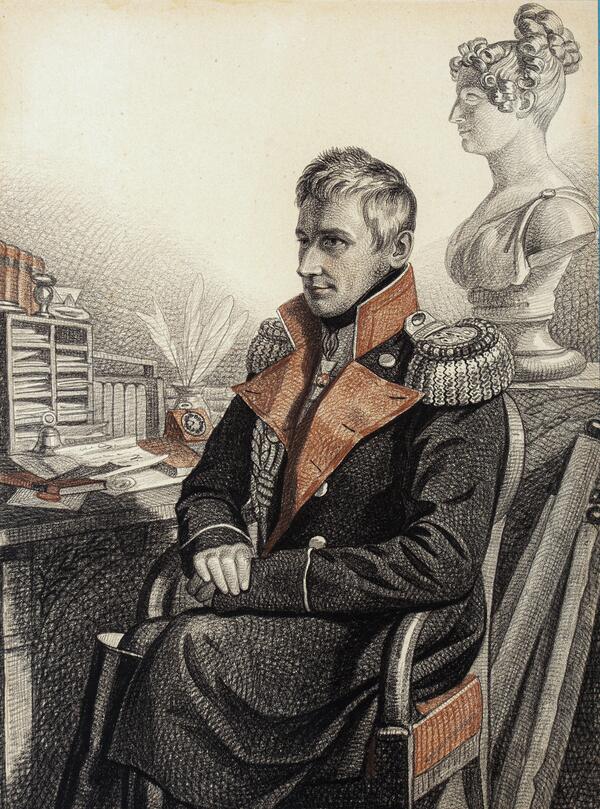Viktor Pavlovich Kochubey was a diplomat and statesman who served as the first Minister of Internal Affairs of the Russian Empire, as well as Chairman of the State Council, Chairman of the Committee of Ministers and Chancellor of the Russian Empire. He was also a knight of the Order of Saint Andrew the Apostle the First-Called. Kochubey rose to prominence at the beginning of the reign of Emperor Alexander I and played a significant role in drafting legislation. He supported reform efforts of Mikhail Mikhailovich Speransky, a renowned statesman, public figure and reformer, known for his legislative work.
Contemporaries described Viktor Kochubey as a man of great restraint and caution. According to one governor, he was “naturally reserved, did not allow any familiarities, but was always courteous and decent”. He was said to always have a highly conciliatory tone: no one else was more skilled than he at resolving difficult issues and finding consensus. Kochubey saw serfdom as a “monstrous evil”, however, as a statesman, he feared upheaval and, as an experienced bureaucrat, was not inclined to “weaken the existing order”. Starting the reign of Alexander as a liberal, by the latter half of his rule, Kochubey began leaning towards conservatism, like many of his peers. The most noble aristocrats gathered at balls, receptions and amateur performances housed by the Kochubeys in the mansion on the Fontanka. The imperial family also sometimes attended these gatherings.
In 1859, Emperor Alexander II commissioned a list of 126 prominent figures in Russian history for inclusion in a monument to celebrate the millennial anniversary of the Russian state. A competition for the design of the monument was won by Mikhail Osipovich Mikeshin (1835–1896), a Russian artist and sculptor. The bronze statue was unveiled in Veliky Novgorod on September 7, 1862.



